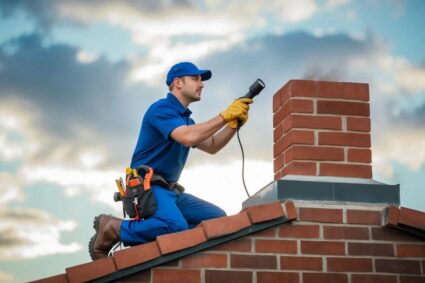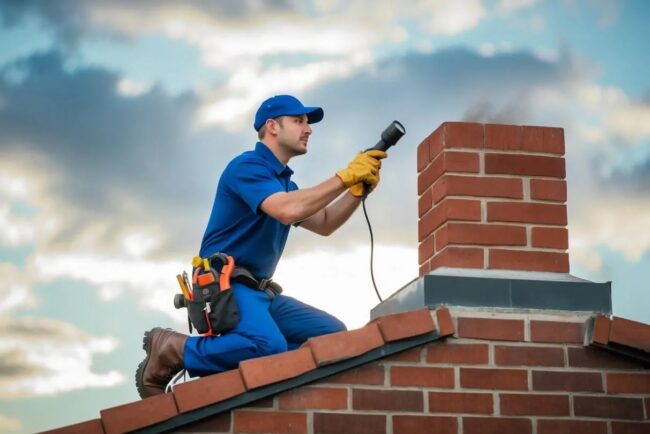
Attic insulation is a common area where asbestos can be found in homes. Homeowners should be aware of the different types of insulation that may contain this harmful material. Here are the main types:
Vermiculite Insulation
- Vermiculite is a lightweight material that looks like small, shiny pellets. It was often used in attics for insulation.
- Many vermiculite products were mined from a site in Libby, Montana, which is known to contain asbestos.
- If you have vermiculite insulation, it’s important to have it tested for asbestos before disturbing it.
Loose-Fill Insulation
- Loose-fill insulation consists of small particles that are blown into the attic space. This type can include materials like cellulose or fiberglass.
- Some older versions of loose-fill insulation may contain asbestos, especially if they were installed before the 1980s.
- Homeowners should check the age and type of their loose-fill insulation to ensure safety.
Blown-In Insulation
- Blown-in insulation is similar to loose-fill but is specifically installed using a machine that blows the material into place.
- This type can also contain asbestos, particularly if it was installed in older homes.
- It’s crucial to have any blown-in insulation tested if the home was built before the asbestos ban.
Roof Shingles and Tar
Roof shingles and tar are common materials used in many homes, but they can sometimes contain asbestos. Homeowners should be aware of the types of shingles and tar that may pose a risk. Here are some key points to consider:
Asphalt Shingles
- Commonly Used: Asphalt shingles are one of the most popular roofing materials.
- Asbestos Risk: Some older asphalt shingles may contain asbestos fibers, which can be harmful if disturbed.
- Signs of Aging: Look for curling or cracking, which may indicate the need for replacement.
Roofing Felt
- Underlayment: Roofing felt is placed under shingles to provide extra protection.
- Asbestos Presence: Older roofing felt may have asbestos, especially if it was installed before the 1980s.
- Check for Damage: If the felt is torn or damaged, it should be inspected by a professional.
Roof Tar and Pitch
- Sealing Material: Roof tar is often used to seal and waterproof roofs.
- Asbestos Content: Some roof tar products may contain asbestos, particularly those made before regulations were put in place.
- Professional Assessment: If roof tar is present, it’s best to have it evaluated by an expert to ensure safety.
Vinyl Floor Tiles
Vinyl floor tiles are a common feature in many homes, but they can sometimes contain asbestos. Homeowners should be aware of the different types of vinyl tiles and their potential risks. Here are some key points to consider:
9×9 Inch Tiles
- These smaller tiles were often used in older homes.
- They may contain asbestos, especially if installed before the 1980s.
- If you have these tiles, it’s important to handle them carefully to avoid damage.
12×12 Inch Tiles
- Larger tiles became popular later on.
- While many newer tiles are safe, some older versions still contain asbestos.
- Always check the date of installation to assess risk.
Adhesive and Mastic
- The glue used to stick down vinyl tiles can also contain asbestos.
- Removing tiles can release harmful fibers into the air.
- It’s best to hire professionals for removal to ensure safety.
Popcorn Ceilings
Popcorn ceilings, also known as acoustic ceilings, were popular in homes built from the 1950s to the 1980s. They have a bumpy texture that can help with sound absorption, but they may also contain asbestos. Here are some key points to consider:
Spray-On Texture
- This type of ceiling finish is applied as a spray, creating a rough surface.
- It was often used to hide imperfections in the ceiling.
- Homeowners should be cautious, as older spray-on textures may contain asbestos.
Acoustic Ceilings
- Acoustic ceilings are designed to reduce noise in a room.
- They can be found in many older homes and may have been installed for soundproofing.
- If disturbed, these ceilings can release harmful asbestos fibers into the air.
Ceiling Tiles
- Some homes feature ceiling tiles that mimic the look of popcorn ceilings.
- These tiles can also contain asbestos, especially if they were made before the 1980s.
- It’s important to check the materials used in these tiles before making any renovations.
Wall and Ceiling Plaster
Wall and ceiling plaster can be a hidden source of asbestos in many homes. This material was commonly used in construction before the dangers of asbestos were fully understood. Here are some key points to consider:
Decorative Plaster
- Decorative plaster was often used to create beautiful designs on walls and ceilings.
- It can be found in older homes, especially in areas like living rooms and dining rooms.
- Homeowners should be cautious when renovating these areas, as the plaster may contain asbestos.
Joint Compound
- Joint compound is used to fill gaps and seams in drywall.
- Some older formulations of joint compound may have included asbestos for added strength.
- It’s important to test any old joint compound before starting repairs or renovations.
Textured Paints
- Textured paints were popular for adding depth and style to walls.
- Some of these paints contained asbestos fibers, which can be harmful when disturbed.
- Homeowners should consider having their textured paints tested if they live in an older home.
HVAC Duct Insulation
HVAC duct insulation is important for keeping homes comfortable and energy-efficient. Unfortunately, some older insulation materials may contain asbestos. Here are the common types of duct insulation where asbestos might be found:
Duct Tape and Sealant
- Duct tape used in older systems may have asbestos fibers.
- Sealants applied to joints and seams can also contain asbestos.
- Homeowners should check for any signs of wear or damage.
Pipe Wrap Insulation
- Pipe wrap is often used to insulate heating and cooling pipes.
- Older wraps may have asbestos, especially if they were installed before the 1980s.
- Inspecting these wraps is crucial for safety.
Boiler Insulation
- Boiler insulation can also be a source of asbestos.
- This insulation helps keep the boiler efficient but may pose asbestos-related health risks.
- Regular maintenance and checks can help identify any potential hazards.
Cement Siding
Cement siding is a popular choice for many homes, but it can sometimes contain asbestos. Homeowners should be aware of the different types of cement siding that may pose a risk. Here are some common types:
Fiber Cement Siding
- Fiber cement siding is made from a mix of cement, sand, and cellulose fibers.
- It is often used because it is durable and can mimic the look of wood or stucco.
- While it is generally safe, older versions may have asbestos.
Asbestos Cement Sheets
- These sheets were commonly used in the past for their strength and fire resistance.
- They can be found in various places, including roofs and walls.
- If you have this type of siding, it’s important to handle it carefully to avoid releasing asbestos fibers.
Exterior Wall Cladding
- This type of cladding is used to protect the exterior of a home.
- It can come in different materials, including cement.
- Homeowners should check if their cladding contains asbestos, especially in older homes.
Electrical Panels and Wiring
Electrical panels and wiring in homes can sometimes contain asbestos. This is important to know because asbestos can be harmful if disturbed. Here are some common areas where asbestos might be found:
Panel Insulation
- Insulation around electrical panels: This insulation can be made from materials that contain asbestos, which helps with heat resistance.
- Older homes: Many older homes used asbestos insulation, so it’s crucial to check if your home was built before the 1980s.
- Professional inspection: It’s best to have a professional look at the insulation to ensure safety.
Wiring Insulation
- Insulation on electrical wires: Some older wiring may have insulation that contains asbestos, which was used for its fire-resistant properties.
- Signs of wear: If the insulation looks damaged or frayed, it’s important to get it checked out.
- Avoid DIY repairs: Homeowners should not attempt to repair or replace wiring without professional help, as this can release harmful fibers.
Breaker Boxes
- Insulation around breaker boxes: Similar to electrical panels, breaker boxes may also have asbestos insulation.
- Check for labels: Some older breaker boxes might have labels indicating the presence of asbestos.
- Safe handling: If asbestos is found, it should be handled by trained professionals to avoid health risks.
Basement and Foundation
Basements and foundations are common areas in homes where asbestos can be found. Homeowners should be aware of the following materials that may contain asbestos:
Foundation Waterproofing
- Old waterproofing materials: Many older homes used waterproofing products that contained asbestos. These materials were designed to keep moisture out and protect the foundation.
- Sealants and coatings: Some sealants applied to basement walls and floors may also have asbestos in them, making it important to check before any renovations.
- Asbestos-containing membranes: In some cases, membranes used for waterproofing can contain asbestos fibers, posing a risk during removal or repair.
Basement Pipes
- Insulation on pipes: Insulation around heating and plumbing pipes in basements often contained asbestos. This insulation was used to prevent heat loss and protect against freezing.
- Old pipe coverings: Some older pipe coverings may also have asbestos, which can be dangerous if disturbed.
- Deterioration risks: As these materials age, they can break down, releasing asbestos fibers into the air.
Concrete Walls
- Asbestos in concrete: Some concrete mixtures used in older homes included asbestos to improve strength and durability.
- Cracks and wear: Over time, cracks in concrete walls can expose asbestos fibers, especially if the concrete is damaged.
- Renovation caution: When renovating or repairing concrete walls, it’s crucial to test for asbestos to avoid health risks.
Window Caulking and Glazing
Windows are essential for letting light into a home, but they can also be a source of hidden dangers. Asbestos can sometimes be found in the materials used for caulking and glazing around windows. Here are some common types:
Window Putty
- What it is: A thick paste used to hold glass panes in place.
- Why it matters: Older window putty may contain asbestos, which can be harmful if disturbed.
- Signs of concern: Cracks or peeling in the putty can indicate a need for replacement.
Caulking Compounds
- What it is: A flexible material used to seal gaps around windows.
- Why it matters: Some older caulking compounds may have asbestos fibers, posing a risk during repairs.
- Signs of concern: If the caulking is crumbling or breaking apart, it may need to be checked for asbestos.
Glazing Materials
- What it is: Materials used to secure glass in window frames.
- Why it matters: Like putty and caulking, older glazing materials can also contain asbestos.
- Signs of concern: Look for discoloration or damage, which may indicate the need for professional inspection.
Homeowners should be cautious when dealing with window caulking and glazing. If there are any signs of wear or damage, it is wise to consult a professional to ensure safety.
Fireplaces and Wood Stoves
Fireplaces and wood stoves can be cozy additions to a home, but they may also contain asbestos. Homeowners should be aware of the potential risks associated with these heating sources. Here are some common areas where asbestos can be found:
Fireplace Insulation
- Insulation Materials: The insulation around fireplaces can sometimes contain asbestos. This insulation helps keep the heat in and the cold out.
- Fireproofing: Some fireproofing materials used in fireplaces may also have asbestos. This is meant to protect the structure from heat damage.
- Old Models: Older fireplaces are more likely to have asbestos insulation, so it’s important to check if the fireplace is vintage.
Stove Gaskets
- Sealing: Gaskets used to seal the doors of wood stoves can contain asbestos. These gaskets help keep smoke and heat inside the stove.
- Wear and Tear: Over time, gaskets can wear out, releasing asbestos fibers into the air. Regular checks are important to ensure they are in good condition.
- Replacement: If a gasket needs to be replaced, it’s crucial to use a safe, asbestos-free product.
Chimney Flues
- Flue Liners: The liners in chimney flues may contain asbestos. These liners protect the chimney from heat and corrosion.
- Inspection: Regular inspections of chimney flues can help identify any potential asbestos issues before they become serious.
- Professional Help: If asbestos is suspected, it’s best to call a professional for safe removal or repair.
If you feel that you’ve been unknowingly exposed to asbestos over time, you may wish to seek medical and/or legal assistance for a mesothelioma claim.




















